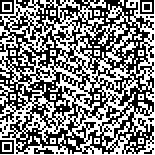郭钢花,梁英姿,刘骞豪,李哲,杨文裕,郝道剑,闫莹莹.坐姿抗痉挛体位下变频振动疗法对脑卒中患者上肢痉挛及运动功能的影响[J].中华物理医学与康复杂志,2017,39(11):811-814
扫码阅读全文

|
| 坐姿抗痉挛体位下变频振动疗法对脑卒中患者上肢痉挛及运动功能的影响 |
| Vibration therapy helps relieve spasticity and improve upper limb motor function after stroke |
| |
| DOI: |
| 中文关键词: 脑卒中 痉挛 变频振动疗法 抗痉挛体位 |
| 英文关键词: Stroke Spasticity Vibration therapy Spasm Posture |
| 基金项目: |
|
| 摘要点击次数: 6057 |
| 全文下载次数: 7075 |
| 中文摘要: |
| 目的 观察坐姿抗痉挛体位下变频振动疗法对脑卒中偏瘫患者上肢痉挛及运动功能的影响。 方法 选取脑卒中偏瘫上肢痉挛患者30例,采用随机数字表法将其分为治疗组及对照组,每组15例。2组患者均给予常规康复训练,治疗组患者在常规康复干预基础上辅以坐姿抗痉挛体位下的变频振动治疗,振动频率为(6±3)Hz。于治疗前、治疗4周后分别采用改良Ashworth分级法(MAS)评定患者偏瘫上肢痉挛程度;检测并记录被动牵伸患者偏瘫侧肢体时肱二头肌及最大等长收缩时肱三头肌、腹斜肌、多裂肌肌电图均方根值(RMS);采用肩、肘、腕关节主动运动范围(A-ROM)、Fugl-Meyer运动功能评分(FMA)评定患者偏瘫上肢运动功能;采用改良Barthel指数(MBI)评定患者日常生活活动(ADL)能力改善情况。 结果 治疗4周后2组患者偏瘫侧上肢MAS、A-ROM、RMS、FMA及MBI评分均较治疗前明显改善(P<0.05);并且治疗后治疗组患者肩、肘、腕MAS评分[分别为(1.40±0.54)分、(1.43±0.56)分、(1.47±0.40)分]、A-ROM[分别为(62.13±22.34)°、(48.60±18.50)°、(45.20±17.76)°]、肱二头肌、肱三头肌、腹斜肌、多裂肌RMS[分别为(14.18±5.63)μV、(100.24±20.52)μV、(78.72±22.50)μV、(84.05±21.64)μV]、FMA及MBI评分[分别为(26.20±6.44)分、(43.87±8.83)分]均显著优于对照组水平,组间差异均具有统计学意义(P<0.05)。 结论 在常规康复训练基础上辅以坐姿抗痉挛体位下的变频振动疗法能有效降低脑卒中偏瘫患者上肢痉挛程度,提高伸肌兴奋性,改善偏瘫上肢运动功能及ADL能力,其疗效明显优于单纯康复训练。 |
| 英文摘要: |
| Objective To observe the effect of variable frequency vibration therapy while sitting in an anti-spasmodic posture on spasticity and the motor function of the upper limbs among stroke survivors. Methods Thirty stroke survivors with upper limb spasticity were randomly divided into a treatment group and a control group, each of 15. Both groups were given routine rehabilitation training for 4 weeks while the treatment group was additionally provided with variable frequency vibration training while sitting in anti-spasmodic postures. Before and after the treatment, the modified Ashworth scale (MAS) was used to assess spasticity. The root mean square (RMS) value of the surface electromyogram amplitude of the affected biceps when extended passively and those of the triceps, obliques and multifidus in maximum isometric contraction was measured and recorded. The motor function of the affected upper limbs was evaluated using the active range of motion (A-ROM) of the shoulder, elbow and wrist, as well as a Fugl-Meyer assessment (FMA). Moreover, ability in the activities of daily living (ADL) was assessed using the modified Barthel index (MBI). Results After the treatment, significant improvement was observed in the average MAS, A-ROM, RMS, FMA and MBI results in both groups compared to those before the treatment. Moreover, the results in the treatment group were significantly better than those of the control group, on average. Conclusions Variable frequency vibration therapy while sitting in an anti-spasmodic posture combined with traditional rehabilitation is more effective than the latter alone in relieving spasticity as well as improving motor function and ability in the activities of daily living among stroke survivors with the upper limb spasticity. |
|
查看全文
查看/发表评论 下载PDF阅读器 |
| 关闭 |